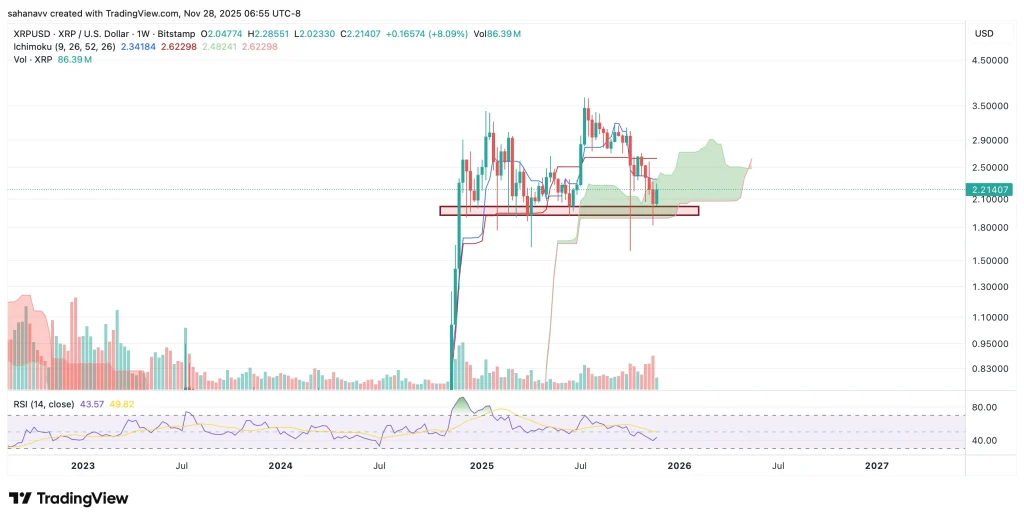Trump’s Potential Fed Overhaul and Its Impact on Asian FX Markets
- Trump’s proposed Fed overhaul and threats to remove Powell/Cook risk undermining central bank independence and dollar stability, sparking global concerns. - Tariff hikes on Indian goods (50%) strain USD/INR, pushing rupee to record lows amid policy uncertainty and trade tensions. - India’s RBI maintains 5.5% rates to balance growth/inflation, contrasting with Fed’s cautious approach, deepening USD/INR volatility. - Asia’s rate cuts (150–200 bps) boost EM bonds’ appeal, offering yield advantages amid doll
Donald Trump’s proposed overhaul of the Federal Reserve has ignited a global debate over the independence of central banks and the stability of the U.S. dollar. By threatening to remove Federal Reserve Chair Jerome Powell and targeting Governor Lisa Cook, Trump has signaled a shift toward politically driven monetary policy, raising concerns about inflation, market volatility, and the dollar’s role as a global reserve currency. These actions, coupled with Trump’s aggressive tariff policies—such as the 50% import duty on Indian goods—have created a complex web of risks and opportunities for investors in Asian foreign exchange (FX) markets, particularly the USD/INR pair.
The Fed’s Independence and the Dollar’s Fragility
The Federal Reserve’s independence has long been a cornerstone of U.S. economic credibility. Trump’s attempts to politicize the Fed, however, risk eroding this trust. Economists warn that a Fed influenced by short-term political goals could prioritize inflation tolerance over long-term stability, leading to higher borrowing costs and reduced investor confidence in the dollar. This dynamic is already playing out in the USD/INR exchange rate, where the rupee has depreciated to record lows of 88.11 in August 2025 amid Trump’s tariff escalations. The dollar’s weakening, driven by both policy uncertainty and trade tensions, has compounded pressure on the rupee, creating a volatile environment for Asian investors.
Strategic Risks for the USD/INR Pair
The USD/INR pair is uniquely vulnerable to Trump’s policies. The 50% tariff on Indian imports has not only strained bilateral trade but also amplified the rupee’s depreciation. Indian economists estimate that a 1% decline in the rupee could mitigate 2–3 basis points of GDP growth impact from tariffs, yet the prolonged weakness of the rupee has raised concerns about inflationary pressures and capital outflows. Meanwhile, the Reserve Bank of India (RBI) has adopted a neutral stance, maintaining its repo rate at 5.5% to balance growth and inflation. This contrasts with the Fed’s cautious approach to rate cuts, creating a divergence in monetary policy that further destabilizes the USD/INR pair.
Opportunities for Asian FX Investors
Despite these risks, Trump’s policies have also opened strategic opportunities for investors. Asian central banks, including those in Indonesia, Thailand, and South Korea, have responded to U.S. tariffs with aggressive rate cuts, creating a 150–200 basis point yield advantage in emerging market (EM) bonds. This divergence from the Fed’s high-rate environment has made local currency EM bonds in India, Indonesia, and Thailand attractive for income-focused investors, particularly when hedged against currency risk via forward contracts or ETFs. Additionally, the weakening dollar has spurred interest in RMB and INR assets, with some strategists suggesting that investors allocate to undervalued equities and infrastructure sectors in Southeast Asia to capitalize on long-term growth.
Navigating the Uncertainty
For investors in the USD/INR pair, the key lies in balancing risk mitigation with opportunistic positioning. Hedging strategies, such as using currency options or diversifying into dollar-denominated debt, can help manage volatility. At the same time, the structural resilience of Asian economies—evidenced by manufacturing PMIs above 50 in most countries—supports a cautiously optimistic outlook for selective opportunities. However, investors must remain vigilant about geopolitical risks, including potential further tariff escalations and the Fed’s evolving credibility crisis.
In conclusion, Trump’s Fed overhaul and tariff policies have created a high-stakes environment for the USD/INR pair. While the rupee faces near-term pressures, the broader shift in monetary policy and trade dynamics offers avenues for strategic investment. Investors who navigate this landscape with agility and foresight may find themselves well-positioned to capitalize on both the risks and rewards of a rapidly changing global economy.
Disclaimer: The content of this article solely reflects the author's opinion and does not represent the platform in any capacity. This article is not intended to serve as a reference for making investment decisions.
You may also like
No wonder Buffett finally bet on Google
Google holds the entire chain in its own hands. It does not rely on Nvidia and possesses efficient, low-cost computational sovereignty.

HYPE Price Prediction December 2025: Can Hyperliquid Absorb Its Largest Supply Shock?

XRP Price Stuck Below Key Resistance, While Hidden Bullish Structure Hints at a Move To $3

Bitcoin Price Prediction: Recovery Targets $92K–$101K as Market Stabilizes